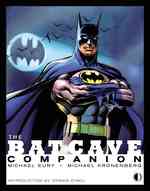- ホーム
- > 洋書
- > 英文書
- > Cinema / Film
Full Description
2024 Best Edited Collection, Midwest Popular Culture Association / Midwest American Culture Association (MPCA/ACA)
How work and capitalism inspire horror in modern film.
American ideals position work as a source of pride, opportunity, and meaning. Yet the ravages of labor are constant grist for horror films. Going back decades to the mad scientists of classic cinema, the menial motel job that prepares Norman Bates for his crimes in Psycho, and the unemployed slaughterhouse workers of The Texas Chain Saw Massacre, horror movies have made the case that work is not so much a point of pride as a source of monstrosity.
Editors Aviva Briefel and Jason Middleton assemble the first study of horror's critique of labor. In the 1970s and 1980s, films such as The Shining and Dawn of the Dead responded to deindustrialization, automation, globalization, and rising numbers of women in the workforce. Labors of Fear explores these critical issues and extends them in discussions of recent works such as The Autopsy of Jane Doe, Midsommar, Survival of the Dead, It Follows, Get Out, and Us. Covering films ranging from the 1970s onward, these essays address novel and newly recognized modes and conditions of labor: reproductive labor, emotion work and emotional labor, social media and self-branding, intellectual labor, service work, precarity, and underemployment. In its singular way, horror continues to make spine-tingling sense of what is most destructive in the wider sociopolitical context of US capitalism.
Contents
Acknowledgments
Introduction (Jason Middleton and Aviva Briefel)
Part I. How Horror Works: Killing, Dying, Surviving
Chapter 1. Tools of the Trade: A Statistical Analysis of Slasher Hardware (Marc Olivier)
Chapter 2. Every Ritual Has Its Purpose: Laboring Bodies in The Autopsy of Jane Doe (David Church)
Chapter 3. George A. Romero and the Work of Survival (Adam Lowenstein)
Part II. Working from Home: Domestic, Gendered, and Emotional Labor
Chapter 4. Sonic Gothic: Listening to the Exhaustion of Gendered Domestic Labor in The Babadook and The Swerve (Lisa Coulthard)
Chapter 5. No Drama: Emotion Work in Midsommar (Jason Middleton)
Chapter 6. Reproductive Technics and Time: Ectogestational Labor, Biotechnological Horror, Social Reproduction (Alanna Thain)
Part III. Stolen Work, Stolen Play: Race and Racialized Labor
Chapter 7. "We Want to Take Our Time": The Hard Work of Leisure in Jordan Peele's Us (Aviva Briefel)
Chapter 8. Racing Work and Working Race in Buppie Horror (Mikal J. Gaines)
Chapter 9. The Horror of Stagnation; or, The Perspectival Dread of It Follows (Joel Burges)
Chapter 10. Fieldwork: Anthropology and Intellectual Labor in Ari Aster's Midsommar (Anjuli Fatima Raza Kolb)
Afterword: The Work of Horror after Get Out (Catherine Zimmer)
List of Contributors
Index






